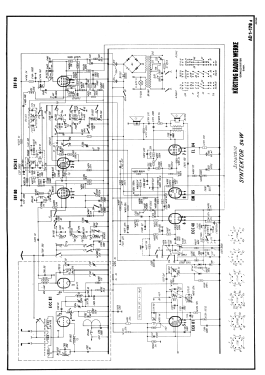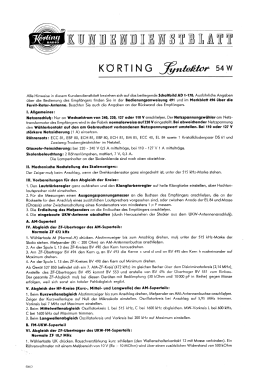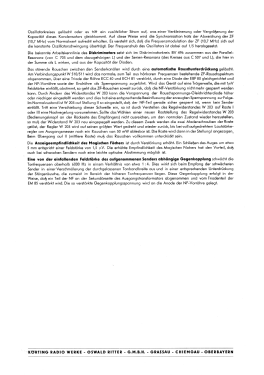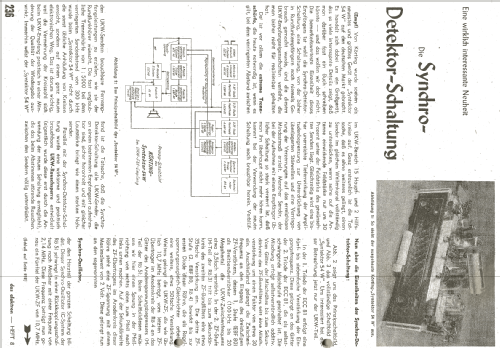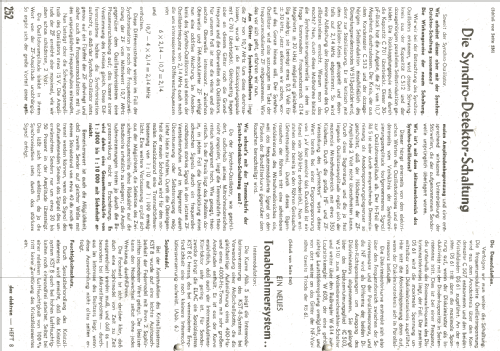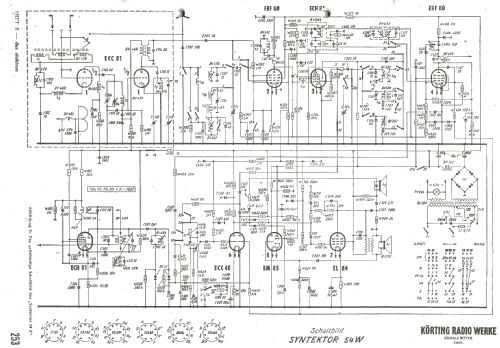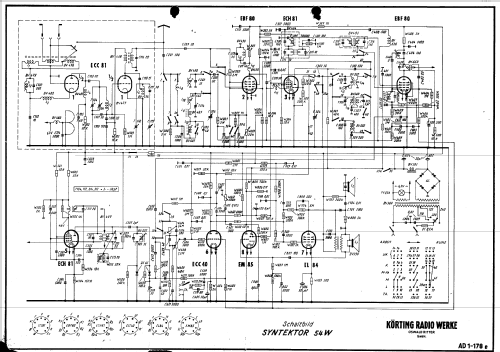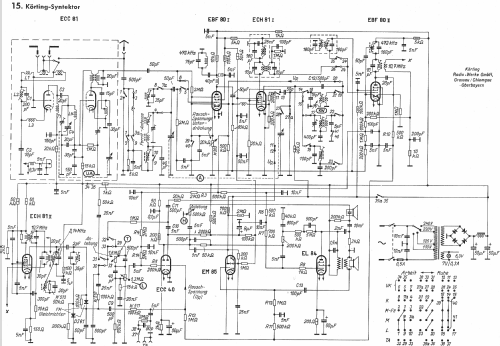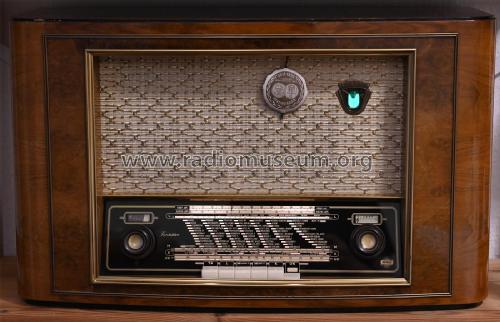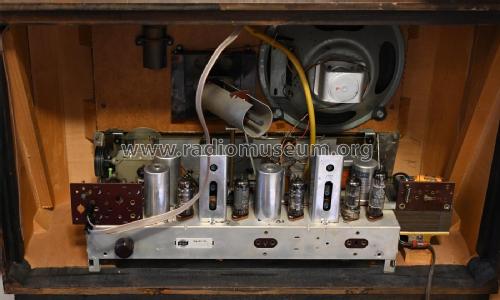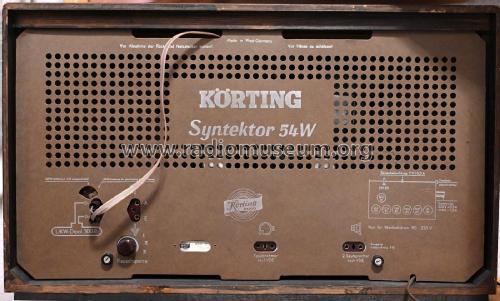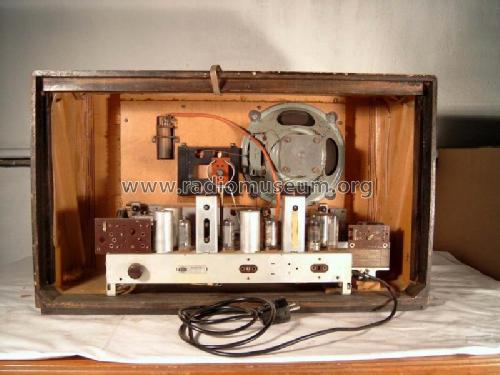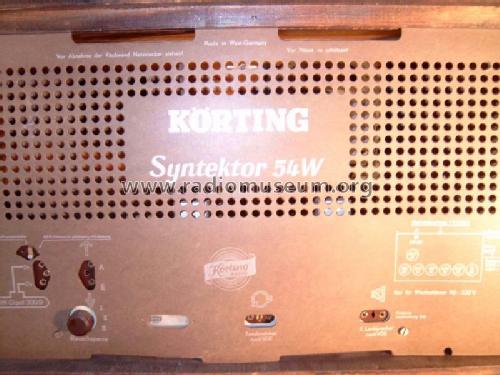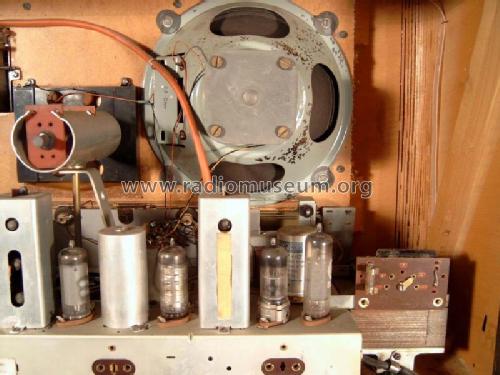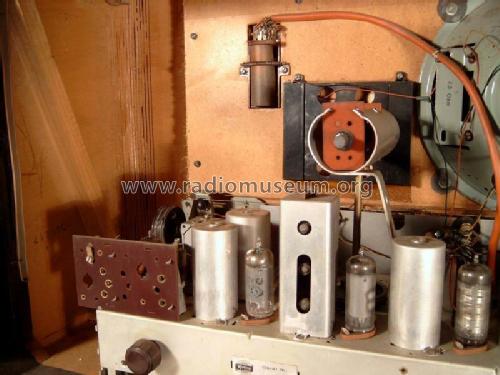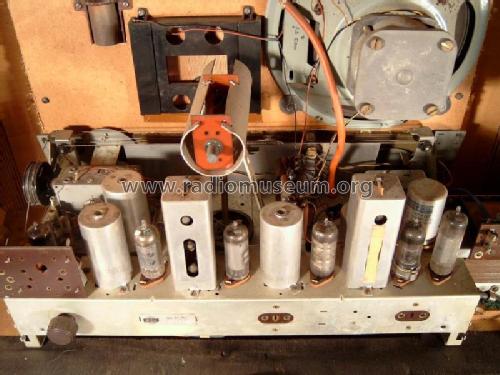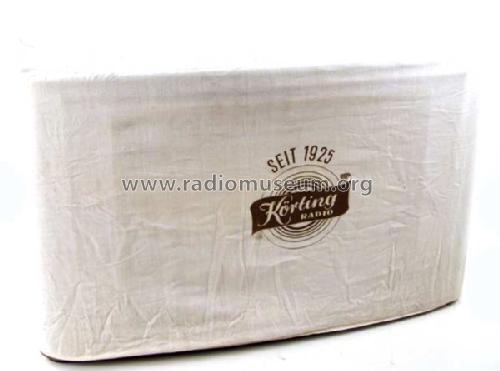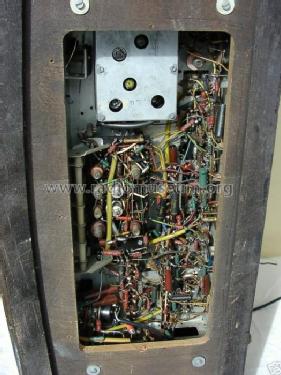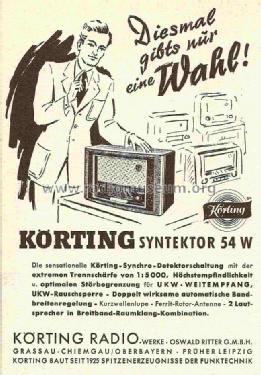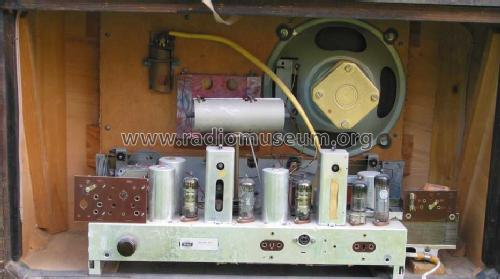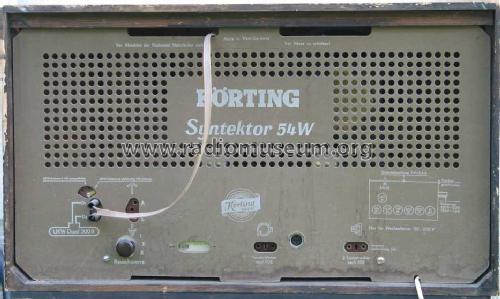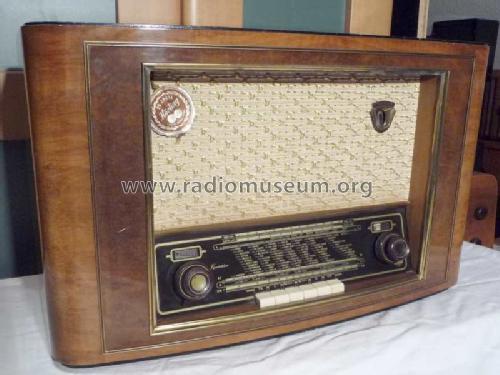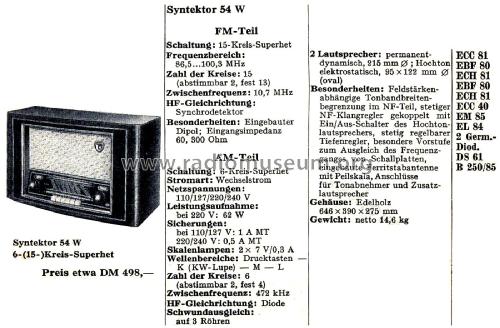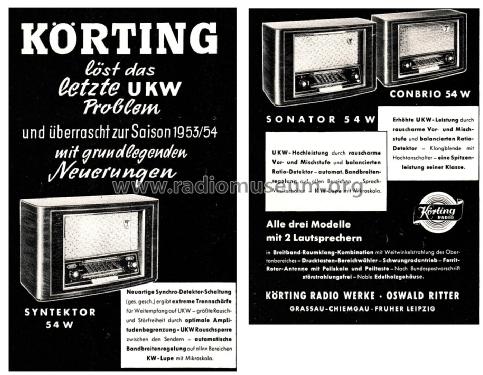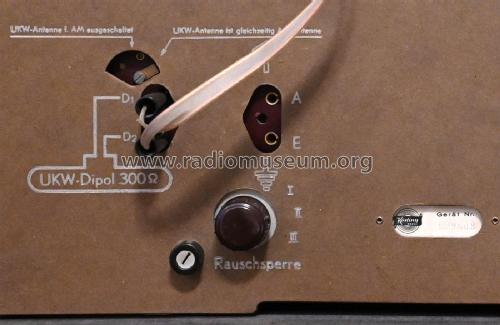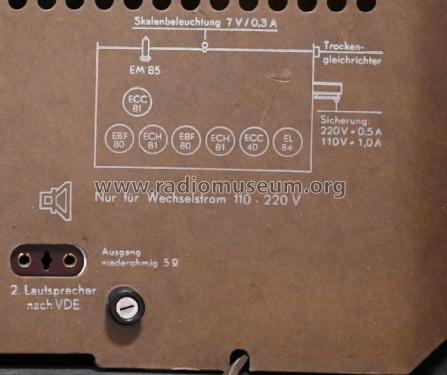Syntektor 54W
Körting-Radio; Leipzig, später Grassau
- Paese
- Germania
- Produttore / Marca
- Körting-Radio; Leipzig, später Grassau
- Anno
- 1953/1954
- Categoria
- Radio (o sintonizzatore del dopoguerra WW2)
- Radiomuseum.org ID
- 19364
-
- alternative name: Dietz & Ritter GmbH, Dr.
Clicca sulla miniatura dello schema per richiederlo come documento gratuito.
- Numero di tubi
- 8
- Numero di transistor
- Principio generale
- Supereterodina con stadio RF; ZF/IF 472/10700 kHz
- N. di circuiti accordati
- 7 Circuiti Mod. Amp. (AM) 15 Circuiti Mod. Freq. (FM)
- Gamme d'onda
- Onde medie (OM), lunghe (OL), corte (OC) e MF (FM).
- Tensioni di funzionamento
- Alimentazione a corrente alternata (CA) / 110; 125; 220; 240 Volt
- Altoparlante
- 2 altoparlanti / Ø 21 cm = 8.3 inch
- Potenza d'uscita
- 5.7 W (max.)
- Materiali
- Mobile in legno
- Radiomuseum.org
- Modello: Syntektor 54W - Körting-Radio; Leipzig, später
- Forma
- Soprammobile con pulsantiera/tastiera.
- Dimensioni (LxAxP)
- 646 x 390 x 275 mm / 25.4 x 15.4 x 10.8 inch
- Annotazioni
-
Dr. Ing. Waldemar Moortgat-Pick ist gemäss FG/141/30 der Vater des Körting Syntektor 54 und Royal Syntektor 55 - und natürlich für alle Geräte mit dieser interessanten Schaltung.
Syntektor = Synchro-Detektor (Synchron-Demodulator für UKW-FM).
- Peso netto
- 14.6 kg / 32 lb 2.5 oz (32.159 lb)
- Prezzo nel primo anno
- 468.00 DM
- Fonte esterna dei dati
- Erb
- Fonte dei dati
- Kat.d.Rundf.GrossH.1953/54
- Bibliografia
- -- Original-techn. papers.
- Letteratura / Schemi (1)
- Funkgeschichte der GFGF (Nr.141, p.30)
- Letteratura / Schemi (2)
- Radio-Mentor (5/1954, S.249ff., Empfänger-Test)
- Altri modelli
-
In questo link sono elencati 822 modelli, di cui 675 con immagini e 473 con schemi.
Elenco delle radio e altri apparecchi della Körting-Radio; Leipzig, später Grassau
Collezioni
Il modello Syntektor fa parte delle collezioni dei seguenti membri.
Letteratura
Il modello Syntektor è documentato nella seguente letteratura.
Discussioni nel forum su questo modello: Körting-Radio;: Syntektor 54W
Argomenti: 2 | Articoli: 4
Zu den Synchro-Detektor-Schaltungen der Körting Syntektor Geräte erschienen Berichte in verschiedenen Fachzeitschriften. Hier nun eine Beschreibung des Syntektor 54 nach Unterlagen des Körting Labors.
Der Bericht (2 Seiten + Schaltbild) erschien in Heft 9/1953 der Zeitschrift 'Radio Magazin' und ist dort abgelegt.
Franz Harder, 21.Feb.18
Greetings Fellow Collectors!
I am fortunate to be in the process of restoring an example of this somewhat historic and technically interesting model from the manufacturer Körting.
After extensive routine work (cleaning, the restuffing of all paper capacitors, etc. etc.) and a complete realignment, I found the UKW to be exemplary in performance, but the LW/MW/KW bands had rather dismal performance at best.
Knowing this model possesses a broadband (untuned) R.F. amplifier stage, I thought that its poorer than average AM performance was quite unusual, especially with the MW band.
I proceeded to trace and investigate a cause.....Was it possibly a mistake in work by myself, or a hidden defect I had overlooked in the resto process?
After a period of time poring over the schematic, taking passive and dynamic measurements and jotting notes,---I discovered the root cause.
A mistake in switchboard bus wiring had been made during assembly at the factory!
A ground lead was connected to the wrong bus. (39)
No direct ground return was provided for bus (40)
Apparently, these wiring errors were somewhat compensated for at the factory by (mis-) alignment and in doing so, must have allowed this particular unit to pass quality control/ testing.
Simply moving the misplaced bus one row to the left side of the tasten Pertinax switchboard and adding the missing 1K resistor,(39 bis 39a,) together with a total realignment of the AM R.F. circuits made for a pleasing surprise of a radio that performs very well!
Please note!
Herr Staginnus has informed me that there are two variants of this model, as noted in the model page data list, schematics "c" and "d." (sch1, sch2) So, my example may not use the 1K cathode resistor switched into the EBF80 (1) cathode circuit for LW band only. (39-39a) I shall remove this resistor I had placed and revert back to direct bus connection per schematic "d," as I found it.
My radio did have the (40) bus/ ground wiring error as mentioned. Sorry for any confusion, and thanks to Herr Staginnus for this observation. We learn!
This radio is certainly worthy now of the installation of a new EM85 indicator tube!
Of little technical use, but this is the first radio that I have literally restuffed the housings of the original Germanium diodes (discriminator) with matched, modern units (NTE110MP)
I type this note as a hint to other owners of the model 54W in the event my radio was not the only example allowed to escape the factory of Körting with this error in bus wiring.
Regards,
D. Daly
Dennis Daly, 28.Sep.08
